| Рассмотрено на заседании ЦК Протокол №_________ «____»_____________20__г. Председатель | Утверждаю ________ ___________20___г. Зав. АФ НМК__________Басистая Е.В. |
Анапский филиал
Государственное бюджетное образовательное учреждение
Среднего профессионального образования
«НОВОРОССИЙСКИЙ МЕДИЦИНСКИЙ КОЛЛЕДЖ»
МИНИСТЕРСТВА ЗДРАВООХРАНЕНИЯ КРАСНОДАРСКОГО КРАЯ
Открытый урок
Учебная дисциплина: Английский язык
Тема: «Великобритания. Оборот There is \there are. Повторение»
Специальность 34.02.01 Сестринское дело
12-М группа. 1-й курс. Очная форма обучения
Базовый уровень подготовки
Подготовила: Альхимович Е.А.
Преподаватель иностранного языка
Преподаватель первой категории
Анапа
2015
Содержание
1.Рецензия
2.Пояснительная записка
3.Стандарт по теме
4.Требования к знаниям и умениям
5.Внутрипредметные связи
6.Межпредметные связи
7. План практического занятия
8.Литература
9.Приложение
Пояснительная записка
Данное занятие проводится в соответствии с рабочей программой и календарно-тематическим планированием по английскому языку для студентов 2 курса специальности 060501 «Сестринское дело» по теме «Великобритания. Оборот there is\ there are. Повторение». На занятии четко прослеживаются межпредметные связи, наблюдается логическое соответствие темы занятия с дисциплинами: история, география, лингвострановедение. Ориентация на личность учащегося, что определяет современную концепцию языкового образования, основными тенденциями которого являются:
личностно-ориентированный подход к обучению иностранным языкам;
формирование коммуникативной, социокультурной компетенций, обеспечивающих развитие критического мышления, социализацию личности учащихся, основывающихся на проблемности процесса обучения;
построение процесса обучения иностранным языкам на деятельностной основе.
Наиболее актуальной педагогической технологией, способной обеспечить решение поставленных перед образованием задач, является метод проектов. Данная методическая разработка урока с использованием мультимедийной презентации дополняет, развивает и вносит новые элементы в содержание обучения иностранному языку и содержит практические рекомендации по использованию относительно нового подхода, как к средствам обучения, так и к содержанию. Планируя предстоящую работу, я стремлюсь разнообразить учебную деятельность студентов на иностранном языке, включить такие творческие личностно-ориентированные упражнения и задания, которые способствуют развитию творческого потенциала личности, расширению зоны активного познания, культуры мышления и порождения иноязычной речи. Я опубликовала статью по теме проектная деятельность на педагогическом сайте (получив за это свидетельство с сайта) хотела бы рассказать преимущества урока с использованием мультимедийной презентации.
Разнообразные формы подачи учебного материала в рамках метода проектов стимулируют развитие таких основных качеств креативности, как беглость, гибкость и оригинальность личности, разработанность идей, активное творческое саморазвитие, интеллектуальная самостоятельность учащихся.
Преимущество мультимедийной презентации
в сочетании и разнообразной текстовой аудио- и видео наглядности;
возможности использования как своеобразной интерактивной; мультимедийной доски, которая позволяет более наглядно семантизировать новый лексический, грамматический и фонетический материал, а также осуществлять опорную поддержку при обучении всем видам речевой деятельности;
возможности использования отдельных слайдов в качестве раздаточного материала (распечатки на бумаге);
управление вниманием учащихся;
в поддержании познавательного интереса, усилении мотивации, эффективности восприятия и запоминании нового учебного материала;
в сочетании аудиторной и внеаудиторной самостоятельной работы учащихся;
в формировании компьютерной мультимедийной компетентности, как учителя, так и ученика, и развитии их креативных способностей в организации учебной работы.
Согласно требованиям к проектным заданиям, как тема, так и вид проекта всегда ориентированы на личность студента. Для того чтобы быть успешной, работа по проекту должна учитывать их интересы и потребности, их собственный жизненный опыт, опираться на мнение и представления самих студентов. Форма представления результатов проекта также выбирается с учетом предпочтений, интересов, потребностей и способностей участников проекта.
Постановка проблемы: Что мы знаем о Великобритании, о ее географическом положении, символах четырех стран, обычаях, традициях, что мы знаем о грамматическом обороте there is there are.
Мотивация: больше узнать о Великобритании, о ее географическом положении, символах четырех стран, обычаях, традициях, о грамматическом обороте there is there are. Углубить и расширить знания по данным темам.
.
ТРЕБОВАНИЯ К РЕЗУЛЬТАТАМ ОСВОЕНИЯ ПРОГРАММЫ ПОДГОТОВКИ
СПЕЦИАЛИСТОВ СРЕДНЕГО ЗВЕНА
Медицинская сестра/Медицинский брат (базовой подготовки) должен обладать общими компетенциями, включающими в себя способность:
ОК 4. Осуществлять поиск и использование информации, необходимой для эффективного выполнения профессиональных задач, профессионального и личностного развития.
ОК 5. Использовать информационно-коммуникационные технологии в профессиональной деятельности.
ОК 6. Работать в коллективе и команде, эффективно общаться с коллегами, руководством, потребителями.
ОК 8. Самостоятельно определять задачи профессионального и личностного развития, заниматься самообразованием, осознанно планировать повышение квалификации.
Медицинская сестра/Медицинский брат (базовой подготовки) должен обладать общими компетенциями, включающими в себя способность:
ПК 1.1. Проводить мероприятия по сохранению и укреплению здоровья населения, пациента и его окружения.
ПК 1.2. Проводить санитарно-гигиеническое просвещение населения.
ПК 1.3. Участвовать в проведении профилактики инфекционных и неинфекционных заболеваний.
ПК 2.1. Представлять информацию в понятном для пациента виде, объяснять ему суть вмешательств.
ПК 2.2. Осуществлять лечебно-диагностические вмешательства, взаимодействуя с участниками лечебного процесса.
ПК 2.3. Сотрудничать с взаимодействующими организациями и службами.
ПК 2.7. Осуществлять реабилитационные мероприятия.
ПК 2.8. Оказывать паллиативную помощь
ПК 3.1. Оказывать доврачебную помощь при неотложных состояниях и травмах.
ПК 3.2. Участвовать в оказании медицинской помощи при чрезвычайных ситуациях.
ПК 3.3. Взаимодействовать с членами профессиональной бригады и добровольными помощниками в условиях чрезвычайных ситуаций.
Требования к знаниям и умениям
Студент должен уметь:
общаться устно и письменно на иностранном языке на профессиональные и повседневные темы;
переводить со словарем иностранные тексты профессиональной направленности;
самостоятельно совершенствовать устную и письменную речь, пополнять словарный запас;
знать:
лексический (1200 - 1400 лексических единиц) и грамматический минимум, необходимый для чтения и перевода со словарем иностранных текстов профессиональной направленности;

Цели урока:
Развивающие: Развивать устную речь, умения преодолевать трудности в учении, способности к ораторскому мастерству, осмысленности восприятия и к распределению внимания, к слуховой дифференциации, к логическому изложению содержания высказывания, к формулированию выводов из прочитанного и услышанного.
Обучающие: Совершенствование навыков и умений всех видов речевой деятельности, чтения на английском языке, устного высказывания, понимание текста, основанного на незнакомом языковом материале. Введение новой лексики в активный языковой материал.
Воспитательные: Формировать у учащихся интерес к культурным и историческим ценностям. Развивать познавательную активность на уроке.
Задачи:
Совершенствование коммуникативной компетенции во всех видах речевой деятельности;
Развивать способности к вербализации, т. е. словесному выражению услышанного.
Умение работать с новой лексикой, воспринимать незнакомый текст с извлечением основной информации, обсуждать проблемы по данной теме в монологических и диалогических высказываниях, с извлечением определенной информации.
Оснащение урока: мультимедийная установка, мультимедийные презентации студентов (подготовленные заранее), грамматические карточки.
Наиболее актуальной педагогической технологией, способной обеспечить решение поставленных перед образованием задач, является метод проектов.
Хронокарта урока.
| № п/п |
Этапы урока |
Время выполнения |
-
| Организационный момент | 5минут |
-
| Мотивация занятия (речевая зарядка) | 10минут |
-
| Контроль исходного уровня знаний (по двум темам) | 20минут |
-
| Вводный инструктаж (по двум темам) | 10минут |
-
| Самостоятельная работа | 20минут |
-
| Контроль конечного уровня знаний | 10минут |
-
| Заключительная часть, подведение итогов | 10минут |
-
| Домашнее задание | 5минут |
Целиурока:
Развивающие: Развивать устную речь, умения преодолевать трудности в учении, способности к ораторскому мастерству, осмысленности восприятия и к распределению внимания, к слуховой дифференциации, к логическому изложению содержания высказывания, к формулированию выводов из прочитанного и услышанного.
Обучающие: Совершенствование навыков и умений всех видов речевой деятельности, чтения на английском языке, устного высказывания, понимание текста, основанного на незнакомом языковом материале. Введение новой лексики в активный языковой материал.
Воспитательные: Формировать у учащихся интерес к культурным ценностям и привить им интерес к Великобритании. Развитие у учащихся интереса к занятию в парах (группах). Развивать у студентов познавательную активность на уроке.
Задачи:
Совершенствование коммуникативной компетенции во всех видах речевой деятельности; обобщение знаний студентов по теме Великобритания. Развивать способности к вербализации, т. е. словесному выражению услышанного.
Умение работать с новой лексикой, воспринимать незнакомый текст с извлечением основной информации, обсуждать проблемы по данной теме в монологических и диалогических высказываниях, с извлечением определенной информации.
Оснащение урока: мультимедийная установка, карточки.
Ход урока :
Организационный момент:
Учитель: Good morning, my dear students. Sit down, please. I’m very glad to see you at English lesson again. Today first we repeat our theme about UK. Then our grammar construction there is there are. Who is on duty today? Who is absent? Let's begin our lesson
Ученик ……
Фонетическая зарядка:
Учитель: Let’s remember our tongue twister about Peter Piper
Ученики хором рассказывают скороговорку
Peter Piper picked a peck of pickled peppers.
A peck of pickled pepers Peter Piper picked.
If Peter Piper picked a peck of pickled peppers,
where's the peck of pickled peppers Peter Piper picked?
Учитель: Let’s remember our tongue twister about Bety Bouter
Ученики хором рассказывают скороговорку
Betty Botter bought some butter
But Betty said, " This butter's bitter,
If I put it in the (my) batter
It'll make my batter bitter.
But a bit of better butter
Will make my batter better."
So she bought a bit of butter
Better than her bitter butter
And she put it in the (her) batter
And the batter wasn't bitter.
So it was better
Betty Botter bought a bit of better butter.
Вводный инструктаж:
Учитель: Theme of our lesson is Great Britain. Grammatical theme is construction there is \are. First let’s remember what have we learned about G.B. Let’s listen your home task. Please come to the blackboard.
Контроль исходного уровня знаний:
Ученики по очереди выходят к доске и рассказывают домашнее задание по теме Великобритания используя мультимедийную презентацию. У каждого имеется презентация, подготовленная заранее. Остальные студенты слушают, участвуют в активном диалоге, задают вопросы.
Учитель (после того как студенты ответили учитель проводит фронтальный опрос задает вопросы остальным студентам )
What is the capital of Great Britain?
Symbol of England?
What do British people say about weather and climate in their country?
What variants of weather do British people have?
What main features has British climate?
What else do you know ? etc.
Вводный инструктаж
Учитель: And now let’s remember our grammar rules about construction there is \ are (учитель напоминает детям правила и случаи употребления конструкции)
There is и there are используют, когда хотят сказать, что что-то существует (или не существует) или находится где-то. Подлежащее (предмет, о котором идет речь) ставится после глагола, а на первое место ставится слово there.
There’s a hole in my pocket. – В моем кармане – дырка.
(звучит натуральнее чем: A hole is in my pocket.)
Обратите внимание на произношение: [ðə(r)], а не [ðeə(r)]
Вместо there нельзя использовать it:
There is a lot of noise in this room. – В комнате шумно.
(Ошибка: It is a lot of noise in this room.)
Используйте there are с подлежащим во множественном числе:
There are a lot of problems with this theory. – С этой теорией множество проблем. (Хоть здесь и стоит a lot, использовать надо are, сравните с предыдущим примером) Внимание! There is используется с неопределенными подлежащими (это когда используется неопределенный артикль (a, an), когда артикля нет, или используются слова some, any, no), и с неопределенными местоимениями как somebody, nothing.
There’s something worrying me. – Меня что-то тревожит
На русский язык эту структуру следует переводить с конца.
Контроль исходного уровня знаний
Вот детская считалочка:
There is a mouse in the house. (В доме – мышь)
There is a cat in the flat.
There is a fox in the box.
There is a bee in the tree.
Is there a mouse in the house?
Is there a cat in the flat?
Is there a fox in the box?
Is there a bee in the tree?
Yes, there is.
А теперь загадка и упражнение (заполните пропуски):
 four corners in the room.
four corners in the room.
 one cat in each corner.
one cat in each corner.
 three cats in front of each cat.
three cats in front of each cat.
How many cats  in the room?
in the room?
Учитель: Немного передохните и послушайте отрывки из песен с использованием конструкции there is / there are:
| There are too many questions
There is not one solution
There is no resurrection
There is so much confusion | Слишком много вопросов
Нет ни одного решения
Нет восстановления
Такая большая путаница |
| There are many things that I would like to say to you
But I don`t know how | Есть много вещей, которые я бы хотел сказать тебе
Но я не знаю как |
| There are nine million bicycles in Beijing | В Пекине – девять миллионов велосипедов |
| There is no other way.
I get the final say | Другого пути не существует.
Это мое последнее слово |
Самостоятельная работа:
Учитель And now let’s do some ex.
Look at the screen.
Учитель предлагает сделать несколько упражнений на интерактивной доске, а затем разделиться на группы и сделать карточки с упражнениями (см. приложение)
Контроль полученных знаний
(Учитель проверяет, как студенты справились с карточками, исправляет ошибки, поясняет непонятные моменты)
Заключительная часть урока (Выставление оценок и подведение итогов)
Учитель Today we know more about Great Britain it’s symbols, population, culture ….. Do you like our lesson? Your marks for the lesson …..Our lesson is over good bye.
.
Литература
http://englishtexts.ru/english-grammar/there-is-there-are
http://abcdetomsk.narod.ru/grammar/sentence/there_is_e.htm
http://infoenglish.info/publ/14-1-0-5
http://for-teacher.ru/lessons/84-urok-angliyskogo-yazyka-tema-velikobritaniya-angliya.html
http://www.zavuch.ru/methodlib/332/35015/
Приложение
Great Britan
1. LOCATION, POPULATION, CLIMATE
1) The official name of Great Britain is the United Kingdom of Great Britain and Northern Ireland (UK).
2) It occupies the territory of the British Isles.
3) It is composed of about 5,500 large and small islands.
4) The two biggest islands are Great Britain and Ireland.
5) Great Britain (UK) consists of four countries: England, Scotland, Wales and Northern Ireland.
6) Their capitals are London, Edinburgh, Cardiff and Belfast.
7) The total area of the UK is about 244,100 square kilometers.
8) The country is washed by the Atlantic Ocean, the North Sea and the Irish Sea.
9) The population of Great Britain is over 57 million people.
10) As the United Kingdom is an island state the climate there is very specific.
11) It is not very cold in winter and never very hot in summer.
12) There is no ice on the lakes and rivers in winter.
13) It often rains in all seasons.
14) Besides, Britain is famous for its fogs.
15) The weather changes so often that Englishmen say that they have no climate in Great Britain, but only weather.
16) The nature of Great Britain is picturesque.
17) There are many rivers and beautiful lakes there.
18) One of the most wonderful parts of the country is called Lake District.
19) The main rivers of Great Britain are the Severn and the Thames.
20) There are no great forests in the British Isles.
21) As for the mountains they are not very high, but very beautiful.
22) The most picturesque region of the country is Highlands in the North of Scotland.
23) This is the region of mountains, rivers and cosy towns and villages.
2. TOWNS, INDUSTRY AND AGRICULTURE.
Great Britain is mainly an industrial country.
That’s why most of the people there live in large towns.
The largest cities of Great Britain are London, Birmingham, Glasgow,
Liverpool, Manchester, Bristol, Leeds, Edinburgh and others.
London is the capital of England and the capital of the United Kingdom, too.
It is a very big city.
Its population is more than 11 million people.
London stands on the river Thames.
The Thames is rather a deep river, so all kinds of ships can come into London port.
That makes London one of the biggest sea ports of world.
London is also one of the main ship-building centres.
Besides, lots of things such as clothes, food, airplanes and cars are madе in London.
Birmingham is the biggest town in an important industrial region in the
centre of England.
Machines, cars and lorries as well as TV- and radiosets are produced there.
Manchester in the north-west of England is the centre of the cotton textile
industry.
Here computers, electronic equipment, various machines, foods and other
things are made.
Glasgow is the biggest city of Scotland.
Shipbuilding is one of its most important industries.
Other industries are iron and steel manufacture, heavy and light
engineering and coal mining.
It’s an industrial city and an important port.
The largest city of Wales is Cardiff, its capital.
It is an important industrial city and a port.
It is also an administrative and educational centre.
Belfast, the capital of Northern Ireland is the leading industrial centre and a large port.
Its chief industries are the production of linen and other textiles, clothing, shipbuilding, engineering.
Great Britain is also a highly developed agricultural country.
Wheat is grown in the east of England.
Vegetables are grown in all parts of the country, especially in the south.
Potatoes are grown everywhere in the British Isles.
Some kinds of fruit can grow in the south where the temperature is higher and there is more sunshine.
There are a lot of cattle farms and farms which produce milk, butter and cheese.
Great Britain is also famous for its wool.
3. THE POLITICAL SYSTEM OF GREAT BRITAIN
The United Kingdom is a constitutional monarchy.
This means that it has a monarch (a king or a queen) as its head of state.
Everything today is done in the Queen’s name (Her Majesty the Queen Elisabeth II).
She approves all the Ministers, including the Prime Minister.
But the monarchy today has practically no power.
The monarch reigns with the support of the parliament.
A parliament is the group of people who make the laws of their country.
British parliament consists of two Houses: the House of Lords and the House of Commons and the Queen as its head.
The House of Commons plays the main role in lawmaking.
It consists of 650 members of Parliament who are elected for a period of five years.
The House of Lords has more than 1,000 members, although only about 250
take an active part in the work of the House.
The members of the House of Lords are not elected, they inherit their seats in Parliament.
The chairman of the House of Lords is the Lord Chancellor and he sits on a
special seat called the Woolsack.
It shows that wool made England rich.
Members of the House of Commons belong to different political parties, and the party which gets the majority of seats in the House is called the ruling party, and the others – the oppositions.
The main British political groups are the Conservative and Labour Parties and the Party of Liberal Democrats.
The Conservative Party is the ruling party, the Labour Party – the opposition to the Conservatives.
The Conservative Party is often called the Tory Party.
It is the party of big business, industry, commerce and landowners.
The Conservative Party and the Liberal are more than three hundred years old.
The Liberals were called “Whigs”.
It was the party of the trading and manufacturing classes.
The Labour Party was formed in 1900.
It was founded by the Trade Unions, but had not done much to change the conditions of working class.
Among the other political parties of Great Britain there are Social
Democratic Party, the Scottish National and Welsh Nationalist Parties, the Communist Party of Great Britain.
4. THE FLAG AND THE NATIONAL EMBLEMS OF GREAT BRITAIN
The flag of the United Kingdom is often called the Union Flag, or the Union Jack.
It consists of several flags.
In 1603 Scotland was joined to England and Wales.
The Scottish Flag, St.Andrew’s Cross (the patron saint of Scotland, blue with a white cross from corner to corner, was joined to the English flag, St.George’s Cross (the patron saint of England), white with a red upright cross.
Later, in 1801, the Irish Flag of St.Patrick’s Cross (the patron of Ireland) was added, white with a red cross from corner to corner.
As for the national emblems of Great Britain they are very unusual and surprising.
Everybody knows about the War of the Roses (1455-1485), which was led between the two contending Houses for the English throne.
The emblem of one of them, the Lancastrians, was the red rose, and the emblem of the Yorkists was the white rose.
Since the end of this war the red rose has been the national emblem of England.
The people of Scotland chose the thistle as their national emblem.
They say that it saved their land from foreign invaders many years ago.
This happened so.
During a surprise night attack by the invaders the Scottish soldiers were awakened by the shouts of one of the invaders, whose bare feet stepped on the thorns of the thistle.
The alarm was given and soon the Scots won victory over the enemy, and the
thistle became their national emblem.
The little shamrock is the national emblem of the Irish.
It is worn in memory of St. Patrick, Irelands patron saint.
A legend says that St. Patrick used a small green shamrock when he was preaching the doctrine of the Trinity to the pagan Irish.
There is a legend according to which St. David (the patron saint of Wales) lived for several years on bread and wild leeks.
So Welshmen all over the world celebrate St. David’s Day by putting leers onto their clothes.
They consider the leek their national emblem.
By the way the daffodil is also associated with St. David’s Day, it flowers on that day.
CLIMATE AND NATURE OF GREAT BRITAIN
CLIMATE
The climate in Great Britain is generally mild and temperate due to the influence of the Gulf Stream. The south-western winds carry the warmth and moisture into Britain. The climate in Britain is usually described as cool, temperate and humid.
British people say: "Other countries have a climate, in England we have weather."
The weather in Britain changes very quickly. One day may be fine and the next day may be wet. The morning may be warm and the evening may be cool. Therefore it is natural for the people to use the comparison "as changeable as the weather" of a person who often changes his mood or opinion about something. The weather is the favourite topic of conversation in Britain. When two Englishmen are introduced to each other, if they can't think of any thing else to talk about, they talk about weather. When two people meet in the street they will often say something about weather as they pass, just to show their friendliness.
Every daily paper publishes a weather forecast. Both the radio and television give the weather forecast several times each day.
The English also say that they have three variants of weather: when it rains in the morning, when it rains in the afternoon or when in rains all day long. Sometimes it rains so heavily that they say "It's raining cats and dogs".
Rainfall is more or less even throughout the year. In the mountains there is heavier rainfall then in the plains of the south and east. The driest period is from March to June and the wettest months are from October to January. The average range of temperature (from winter to summer) is from 15 to 23 degrees above zero. During a normal summer the temperature sometimes rises above 30 degrees in the south. Winter temperatures below 10 degrees are rare. It seldom snows heavily in winter, the frost is rare. January and February are usually the coldest months, July and August the warmest. Still the wind may bring winter cold in spring or summer days. Sometimes it brings the whirlwinds or hurricanes. Droughts are rare.
So, we may say that the British climate has three main features: it is mild, humid and changeable. That means that it is never too hot or too cold. Winters are extremely mild. Snow may come but it melts quickly. In winter the cold is humid cold, not the dry one.
This humid and mild climate is good for plants. The trees and flowers begin to blossom early in spring.
In the British homes there has been no central heating up till recently. The fireplaces are often used. but the coal is not used as it's very expensive. Britain has no good coal now and imports it itself. Many schools and universities have no central heating either, and the floors there are made of stone. The British bedroom is especially cold, sometimes electric blankets or hotwater bottles are used.
VEGETATION AND WILDLIFE
Britain was originally a land of vast forests. mainly oak and beech in the Lowlands and pine and birch In the Highlands, with great stretches of marshland and smaller areas of moors. In the course of time, much forest land was cleared and almost all Lowlands outside the industrial areas were put under cultivation. Today only about 6 per cent of the total land area remains wooded.
Extensive forests remain in eastern and northern Scotland and in south-eastern and western England. Oak, elm, ash, and beech are the commonest trees in England, while Scotland has much pine and birch. The Highlands with thin soil are largely moorland with heather and grasses. In the cultivated areas that make up most of Britain there are many wild flowers, flowering plants and grasses.
The fauna or animal life of Britain is much like that of north-western Europe, to which it was once joined. Many larger mammals such as bear, wolf have been hunted to extinction, others are now protected by law. There are many foxes. Otters are common along rivers and streams, and seals live along much of the coast. Hedgehogs, hares, rabbits, rats and mice are numerous. Deer live in some of the forests in the Highlands of Scotland and England.
Some 230 kinds of birds live in Britain, and another 200 are regular visitors, many are songbirds. The most numerous are blackbirds, sparrow and starling. Robin Redbreast is the national bird of Britain. The number of ducks, geese and other water fowl has diminished during recent years.
There are many threats to wildlife and ecological balance around the coast. The biggest threat to the coastline is pollution. Even much-loved
Blackpool is not officially asafe. More than 3.500 million tons of industrial waste is pumped into the North Sea every year. "We cannot continue to use our seas as a dustbin and expect our coastline to survive," says Greenpeace. Many other ecological problems may be caused by privatization of the coast. Many of the rivers are "biologically dead", i.e. unable to support fish and wildlife.
QUESTIONS
Why is the climate in Britain generally mild and temperate?
What do British people say about weather and climate in their country?
What variants of weather do British people have?
What main features has British climate?
Is the humid and mild climate of Great Britain good for plants and flowers?
Do British people believe weather forecasts?
Are winters frosty?
Does it often snow in winter?
Why is it natural for British people to use the comparison 'as changeable as the weather'?
What do British people say when it rains so heavily?
What do British people do to warm themselves when it is cold?
What are the warmest and the coldest months?
Was Great Britain originally a land of vast forests?
Where do extensive forests remain?
What trees grow in Great Britain?
What animals are numerous in Great Britain?
How many kinds of birds live in Great Britain? Which of them are the most numerous?
What is the national bird of Great Britain?
Does the country have any ecological problems?
What is Greenpeace?
LONDON - THE CAPITAL OF GREAT BRITAIN
When we think of Paris, Rome. Madrid, Lisbon and other European capitals, we think of them as "cities'. When we think of the whole of modern London, the capital city of England and the United Kingdom, that great area covering several hundred square kilometres, we do not think of it as 'a city. not even as a city and its suburbs. Modem London is not one city that has steadily become larger through the centuries; it is a number of cities. towns, and villages that have, during the past centuries, grown together to make one vast urban area.
London is situated upon both banks of the River Thames, it is the largest city in Britain and one of the largest in the world. Its population is about 7 million people.
London dominates the life of Britain. It is the chief port of the country and the most important commercial, manufacturing and cultural centre. There is little heavy industry in London, but there is a wide range of light industry in Greater London.
London consists of three parts: the City of London, the West End and the East End.
The City extends over an area of about 2.6 square kilometres in the heart of London. About half a million people work in the City but only less than 6000 live here. It is the financial centre of the UK with many banks, offices and Stock Exchange. But the City is also a market for goods of almost every kind, from all parts of the world.
The West End can be called the centre of Tendon. Here are the historical palaces as well as the famous parks. Hyde Park with its Speaker's Corner is also here. Among other parks are Kensington Gardens, St.James's Park. In the West End is Buckingham Palace. Which is the Queen's residence, and the Palace of Westminster which is the seat of Parliament.
The best-known streets here are Whitehall with important Government offices. Downing Street, the London residence of Prime Minister and the place where the Cabinet meets. Fleet Street where most newspapers have their offices, Harley Street where the highest paid doctors live, and some others.
Trafalgar Square is named so in commemoration of Nelson's great victory. In the middle stands the famous Nelson Column with the statue of Nelson 170 feet high so as to allow him a view of the sea. The column stands in the geographical centre of the city. It is one of the best open air platforms for public meetings and demonstrations.
One of the "musts" for the sightseer are the Houses of Parliament, facing the Thames, on one side, and Parliament Square and Westminster Abbey, on the other. The House of Commons sits to the side of the Clock Tower (Big Ben), the House of Lords - to the Victoria Tower side.
Westminster Abbey is the crowning and burial place of British monarchs. It has its world famed Poet's Corner with memorials to Chaucer, Shakespeare, Milton, the Bronte's sisters. Tennyson. Longfellow, Wordsworth, Burns, Dickens, Thackeray, Hardy, Kipling and other leading writers. Only a few however, are actually buried there.
Here too is that touching symbol of a nation's grief. The Grave of the Unknown Warrior.
The name "West End" came to be associated with wealth, luxury, and goods of high quality. It is the area of the largest department stores, cinemas and hotels. There are about 40 theatres, several concert halls, many museums including the British Museum, and the best art galleries.
It is in the West End where the University of London is centred with Bloomsbury as London's student quarter.
The Port of London is to the east of the City. Here. today are kilometres and kilometres of docks, and the great industrial areas that depend upon shipping. This is the East End of London, unattractive in appearance, but very important to the country's commerce.
In recent times London has grown so large. that the Government has decided that it must spread no farther. It is now surrounded by a "green belt" - a belt of agricultural and wooded land on which new buildings may be put up only with the permission of the planning authorities.
SOME FACTS ABOUT LONDON
London has been home of many famous Englishmen. Some were born there. Some lived there all their lives. Others lived in London only for a short time but all gave something to this great city
One of the first names of importance is that of Geoffrey Chaucer, the poet. He lived most of his life in London. He knew the courts of King Richard II d King Henry IV. His most famous work, 'The Canterbury Tales", opens at the Tabard Inn, in Southwark. Chaucer held official posts in London and is buried in Westminster Abbey.
William Shakespeare also lived in London. He lived there for more than twenty years. He acted at the Globe Theatre and wrote his plays in London. But London's famous men are not only writers. Sir Christopher Wren, the architect, spent most of his life in London. He designed many beautiful churches, including St. Paul's Cathedral. He also designed palaces and fine houses.
Music is represented by a very interesting figure. This is George Frederick Handel. He came to London from Hanover in 1710. He lived for a time at Burlington House, Piccadilly, now the Royal Academy. After some success and some failure he at last became famous. This happened when he composed "The Messiah". "Judas Maccabeus". and 'The Music for the Royal Fireworks". Like Chaucer and many other great artists. Handel is buried in Westminster Abbey.
Another famous London figure is one of England's greatest seamen. Admiral Lord Nelson. He has a very special memorial in Trafalgar Square. The monument consists of a very tall column. On top of it stands a figure of Nelson. It is called the Nelson Column. Equally famous is the general who led the army at the battle of Waterloo in 1815. This was the Duke of Wellington. His house stands at Hyde Park Comer. It is sometimes known as Number One, London. Like Admiral Nelson, the Duke of Wellington is buried in St. Paul's Cathedral.
QUESTIONS
1. Where is London situated?
2. Is London the largest city in Britain?
3. What is its population?
4. What is the role of London in the life of Britain?
5. What parts does London consist of?
6. What can the West End be called? What places of interest are situated in the West End?
7. What are the best known streets?
8. What is the most famous park in London?
9. What is Downing Street known for?
10. What is the name "West End" associated with?
11. Why is Trafalgar Square named so?
12. Where were British monarchs crowned?
13. London is a big cultural centre, isn't?
14. Why is Buckingham Palace so interesting for tourists?
15. What is the financial centre of Great Britain?
16. Is East End of London attractive in appearance?
17. Who lives there?
18. What famous museums would you like to visit in London?
19. What is the symbol of London and Great Britain?
20. If you found yourself in London what would you like to visit first?
Упражнение 16 Circle the correct sentence.
There are armchair in the room.
There are two armchairs in the room.
There's a sofa in the bedroom?
Is there a sofa in the bedroom?
There's a TV in the flat.
This is a TV in the flat.
Are there chairs in the hall?
Are there any chairs in the hall?
Упражнение 17. Make up sentences
. 1) the bathroom, a mirror, in, is, there. 2) 3 chairs, are, there, the table, near. 3) behind, a lake, is, the house, there? 4) many, there, in, toys, the box, are? 5) isn't, in, a cat, there, the bedroom
Упражнение 15. Write the sentences in your exercise-book.
1. the living-room / There's / in / a sofa
2. in / isn't / the kitchen / There / a mirror /
3. the bedroom / there / in / Are / beds / two / ?
4. Are / wardrobes / the hall / there / in / two /?
5. a lamp / there / Is / room / your / in / ?
Упражнение 11. Circle the correct answer.
1.Is there a fridge in the kitchen? a Yes, there is. b. No, there isn't.
2. Are there two cupboards in the kitchen? a. Yes, there are. b. No, there aren't.
3. Are there any telephones in the kitchen? a. Yes, there are. b. No, there aren't.
4. Is there a cooker in the kitchen? a Yes, there is. b. No, there isn't.
Упражнение 12. Circle the correct word. Give short answers about your room.
Is / Are there a sofa in the room? ______________________
Is / Are there any chairs? ______________________
Is / Are there any lamps? ______________________
Is / Are there a wardrobe in the room? ______________________
Is / Are there two armchairs? ______________________
Is / Are there a carpet on the floor? ______________________
Упражнение 13. Write in isn't or aren't.
There ________a sofa in the room.
There ________any armchairs.
There ________ any lamps.
There ________a bookcase.
There ________a bed.
There________any books.
![]() Упражнение 6.
Упражнение 6.
Составь и запиши предложения.
1. pears / there / ten / in the / are / bag / .
2. aren’t / pupils / there / classroom / in the / .
3. an egg / on the / there / plate / is / ?
4. on the / there / a / cat / chair / is / white / .
5. a turtle / on / there / isn’t / farm / this / .
6. at the / two / bikes / door / are / there / ?
Упражнение 7.Circle the correct word
There is / There are a big hall downstairs.
There is / There are two bathrooms upstairs.
There is / There are beautiful trees in the garden.
There is / There are a kitchen downstairs.
There is / There are three bedrooms in the house
Fill in with there is or there are
1. ________________ nice flowers in the room.
2. ________________ a red vase on the table.
3. ________________ chairs next to the table.
4. _________________ a mouse in the yard.
5. __________________ books in the bag .
6. _________________ balls under the table .
7. _________________ a mirror in the bedroom.
8. __________________ pens on the book.
9. __________________ bridges in the town.
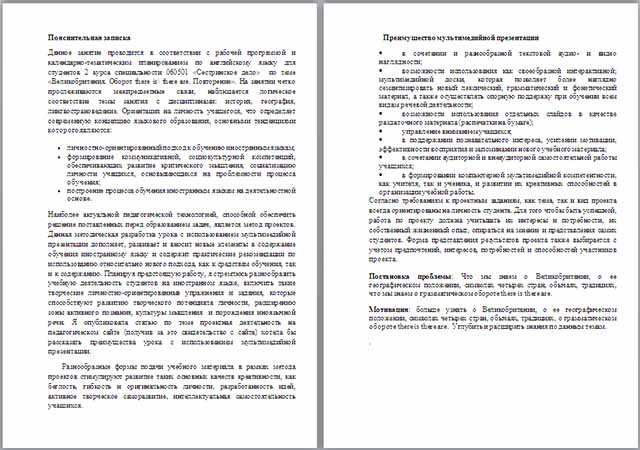

 Получите свидетельство
Получите свидетельство Вход
Вход




 four corners in the room.
four corners in the room.
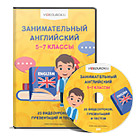
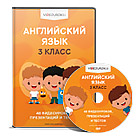
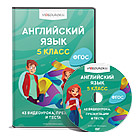
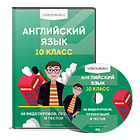
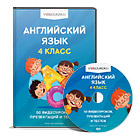
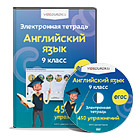
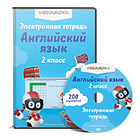
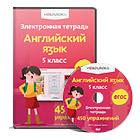
 Конспект урока по английскому языку по теме «Великобритания. Оборот There is here are. Повторение» (67.88 КB)
Конспект урока по английскому языку по теме «Великобритания. Оборот There is here are. Повторение» (67.88 КB)
 0
0 1014
1014 52
52 Нравится
0
Нравится
0





